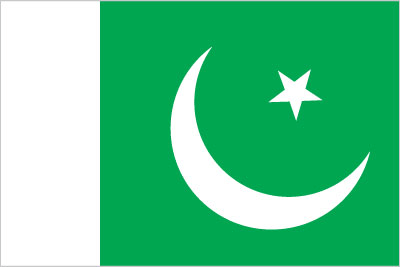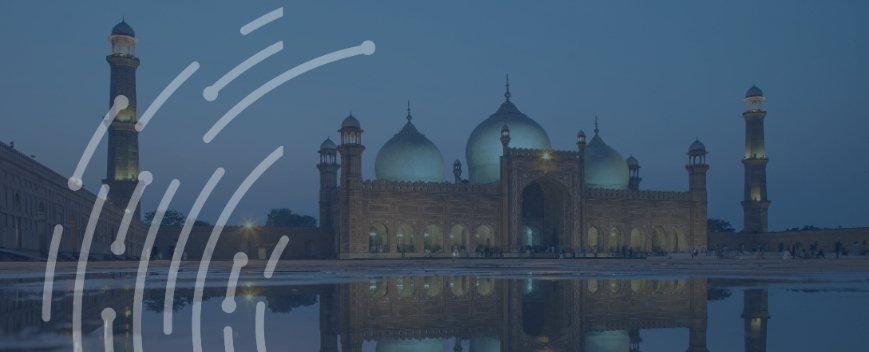Exporting to Pakistan


Pakistan Country Profile
Official Name (Local Language) Jamhuryat Islami Pakistan
Capital Islamabad
Population 201,995,540
Currency Pakistani Rupee
GDP $298.1 billion
Languages English; Punjabi; Urdu
Phone Dial In 92
Pakistan Imports Profile
Imports ($m USD) 57,440
Number of Import Products 4,162
Number of Import Partners 209

Pakistan Economic Statistics
Government Website | https://www.pakistan.gov.pk/ |
| Sovereign Ratings | https://countryeconomy.com/ratings/pakistan |
| Central Bank | State Bank of Pakistan |
| Currency USD Exchange Rate | 103.768 |
| Unemployment Rate | 6.1% |
| Population below poverty line | 29.5% |
| Inflation Rate | 2.9% |
| Prime Lending Rate | 5.75% |
| GDP | $298.1 billion |
| GDP Pro Capita (PPP) | $5,100 |
| Currency Name | Pakistani Rupee |
| Currency Code | PKR |
| World Bank Classification | Lower Middle Income |
| Competitive Industrial Performance | 122/138 |
| Corruption Perceptions Index | 117/180 |
| Ease of Doing Business | 136/190 |
| Enabling Trade Index | 122/136 |
Access trade, receivables and supply chain finance
We assist companies to access trade and receivables finance through our relationships with 270+ banks, funds and alternative finance houses.
Get StartedExporting to Pakistan
Pakistan is South Asia’s biggest economy after India, and an important trade partner for the West. Pakistan’s main imports are oil, textiles, and chemicals and pharmaceuticals; these overwhelmingly come from Asia, Pakistan’s main partners being China, the UAE, Saudi Arabia and Indonesia. Despite ample oil and natural gas reserves, Pakistan imports almost all its fuel due to low capacity for oil refining and depleting gas resources in existing fields. To decrease dependence on imports, the government has been investing in infrastructure such as oil refineries and natural gas terminals, as well as opening up the natural gas sector for private firms. However, it maintains a steady trade deficit and is heavily reliant on imports in many sectors, most importantly energy.
The economy is characterised by a heavy state presence, a difficult business environment, and some of the most protectionist trade policies in the world. The challenging macroeconomic environment and environmental catastrophes, such as the 2022 floods that destroyed much of its agricultural and livestock production, make poverty reduction difficult. However, macroeconomic measures have been improving in 2023, and an IMF loan approved in July 2024 is expected to further strengthen the economy and boost growth.
Pakistan’s trade policy has an anti-export bias, aimed at reducing the trade deficit by restricting imports and encouraging businesses to produce for the domestic market. Import tariffs are high, and the country consistently has one of the lowest scores in the Ease of Doing Business report; bureaucracy can be complex and expensive, also due to corruption. Imports of some products, such as nonessential luxury goods, are banned entirely and other sectors are heavily taxed in an effort to improve current accounts balance. An expanding list of products require a “100 percent cash margin,” which means importers must hold deposits of the full value of the imported products when they are placing the order.
Exporting to Pakistan: What is trade finance?
The Economic Complexity Index (ECI) considers Pakistan’s economy as the 70th largest in the world and 89th in terms of complexity. The country’s total export value could reach US $20.29 billion.
Pakistan heavily exports textiles such as house linens ($2.7 billion), non-retail pure cotton yarn ($2.4 billion), and heavy pure woven cotton ($1.2 billion), food such as rice ($2.1 billion) and leather goods and manufactures.
Such commodities are exported to various countries such as the United States ($3.59 billion), China ($3.2 billion) Afghanistan ($2.3 billion) and the United Arab Emirates ($1.8 billion).
Chart Showing GDP Growth Compared to rest of world
GDP Composition for Pakistan
Agriculture
25.2%
Cotton, wheat, rice, sugarcane, fruits, vegetables; milk, beef, mutton, eggs
Industry
19.2%
Textiles and apparel, food processing, pharmaceuticals, construction materials, paper products, fertilizer, shrimp
Services
55.6%
Government services Transportation Other business services Computer and information services Communications services Travel Insurance services Financial services Construction services Cultural and recreational services Royalties and license fees
Map
Top 5 Import Partners
| Country | Trade | % Partner Share |
| China | 15,383 | 26.78 |
| United Arab Emirates | 7,524 | 13.10 |
| United States | 2,843 | 4.95 |
| Saudi Arabia | 2,730 | 4.75 |
| Indonesia | 2,583 | 4.50 |
Top 5 Import Products
| Export Product | Number |
| Petroleum oils, etc, (excl. crude); preparation | 12.9% |
| Petroleum oils and oils obtained from bituminou | 5.5% |
| Palm oil (excl. crude) and liquid fractions | 3.6% |
| Natural gas, liquefied | 3.4% |
| Transmission apparatus, for radioteleph incorpo | 2.5% |
Local Partners
- All Topics
- Pakistan Trade Resources
- Export Finance & ECA Topics
- Local Conferences



















